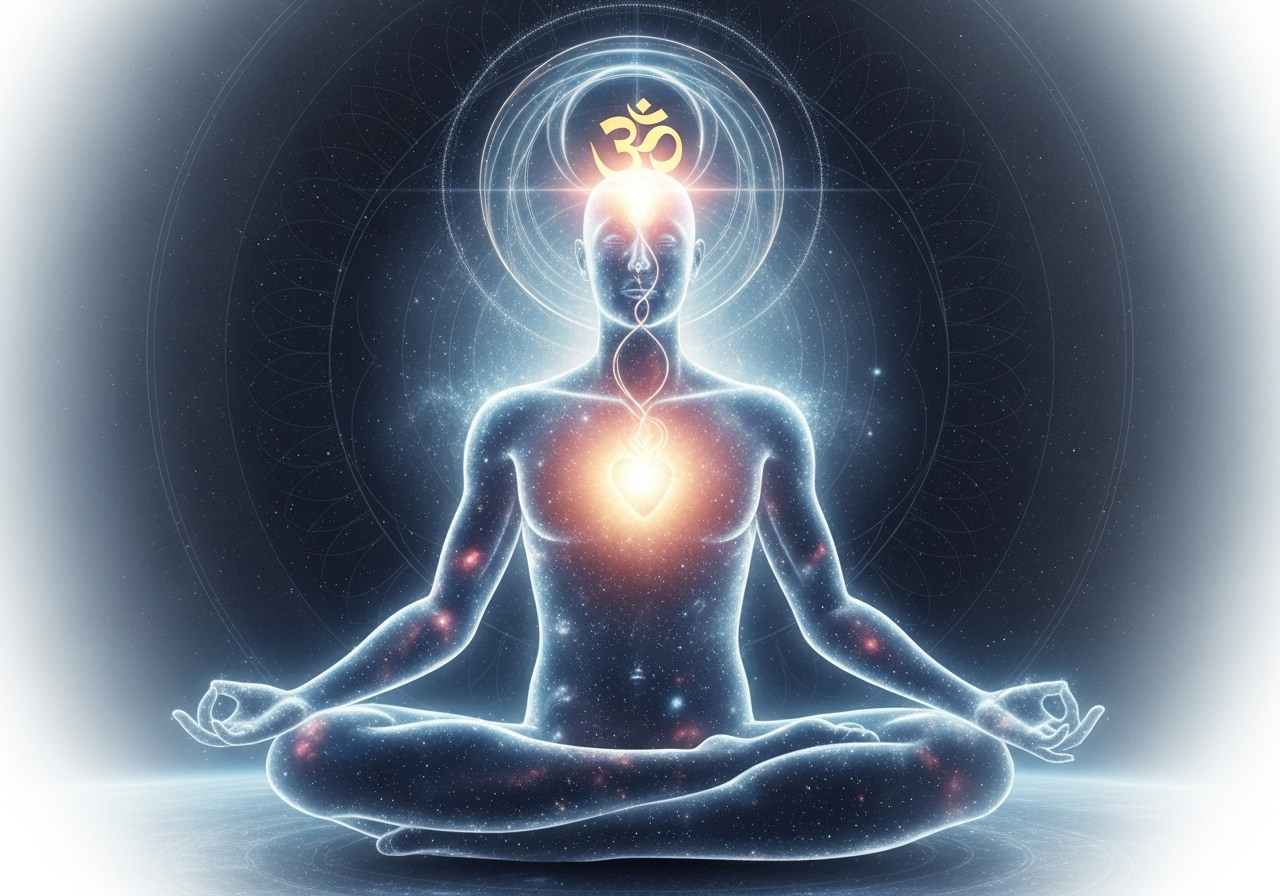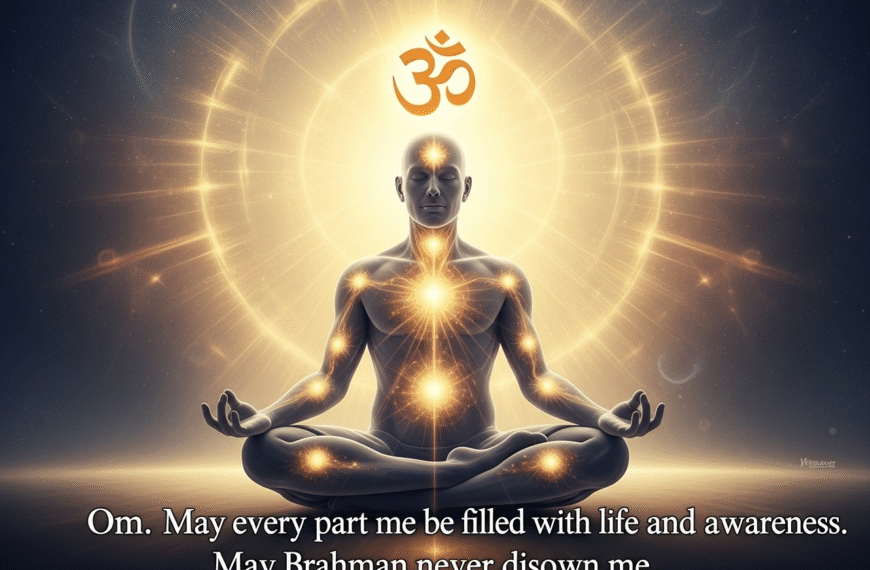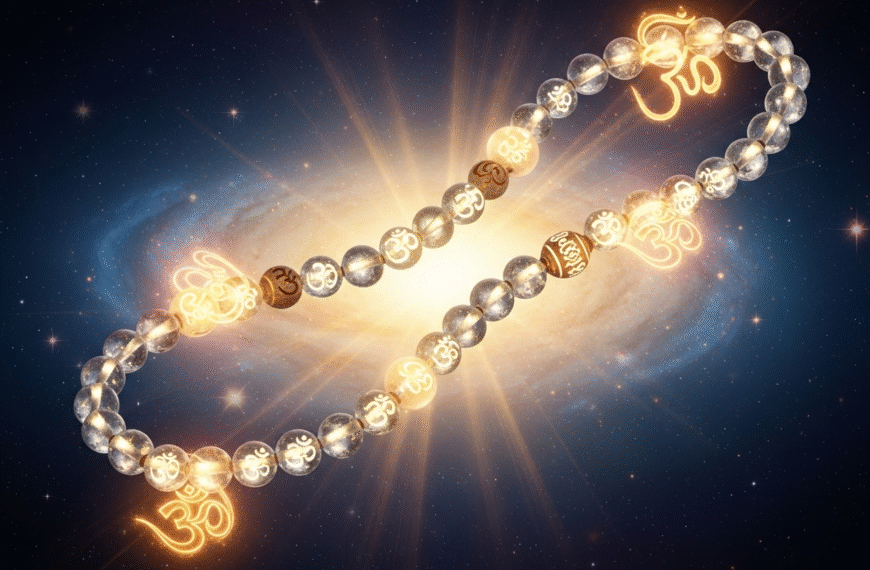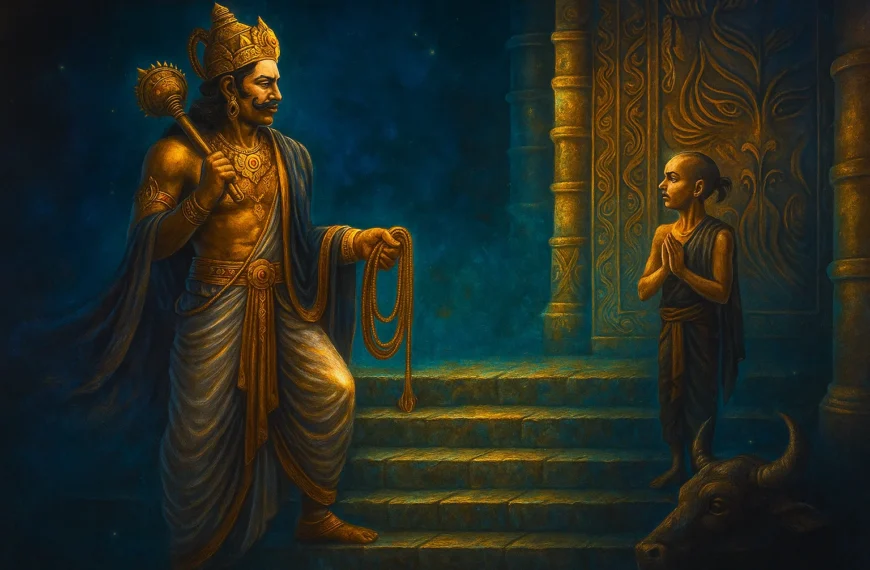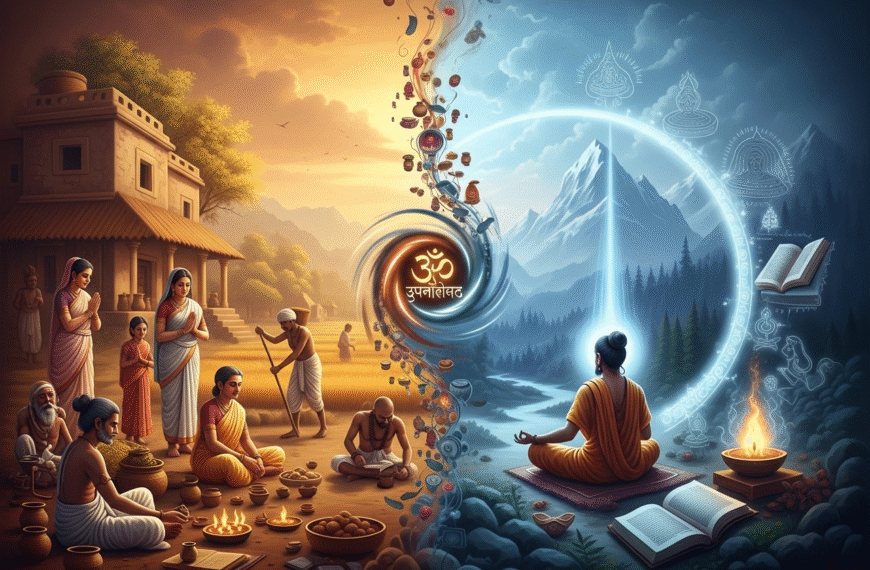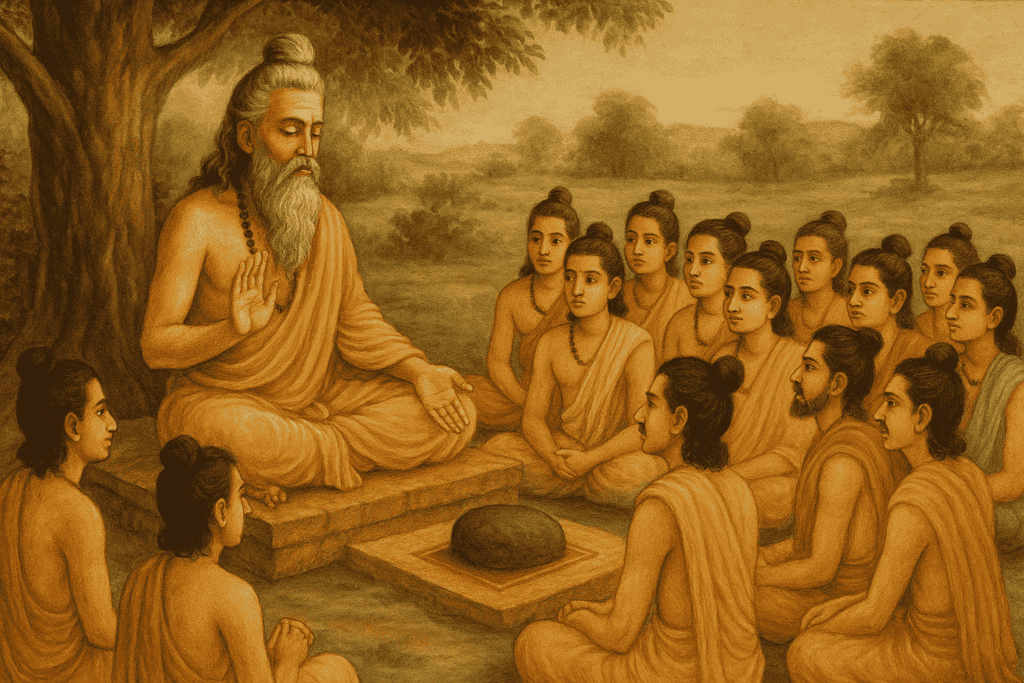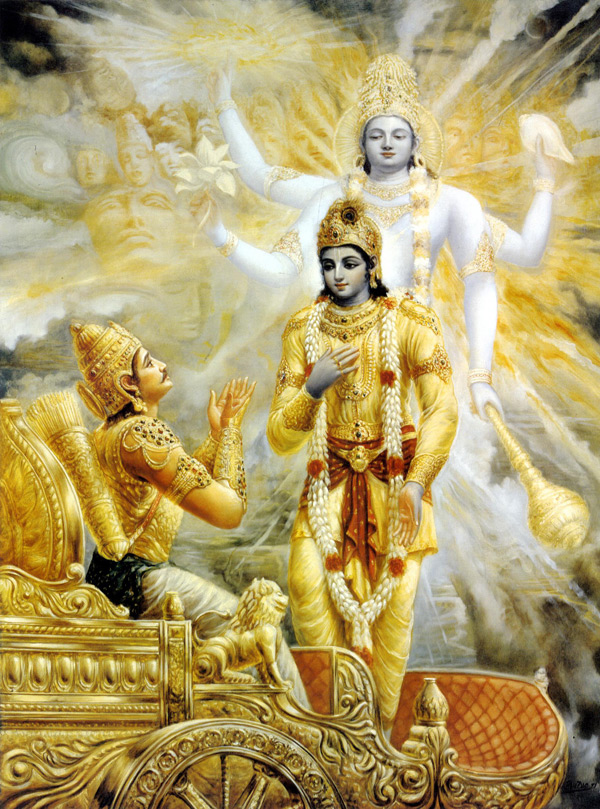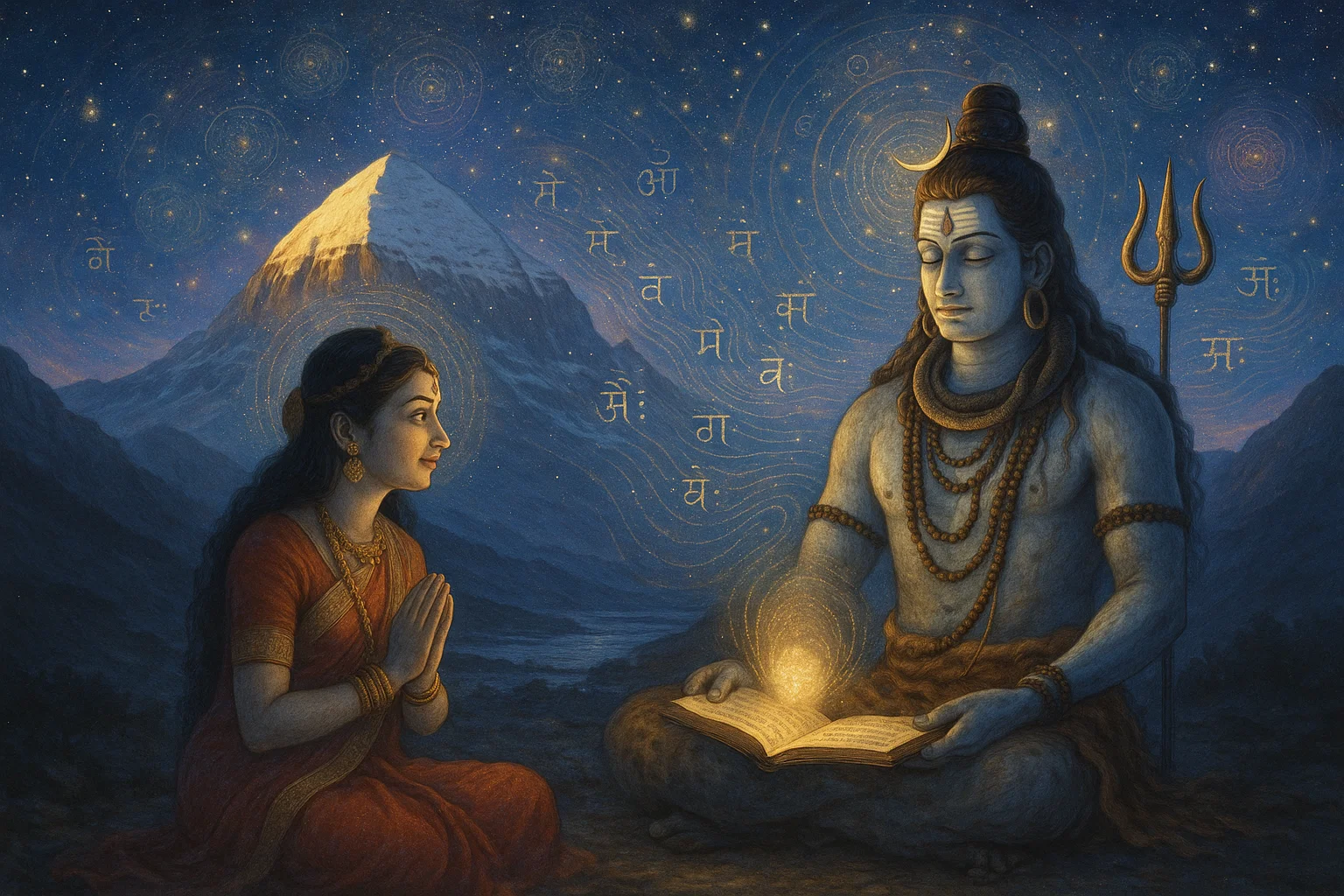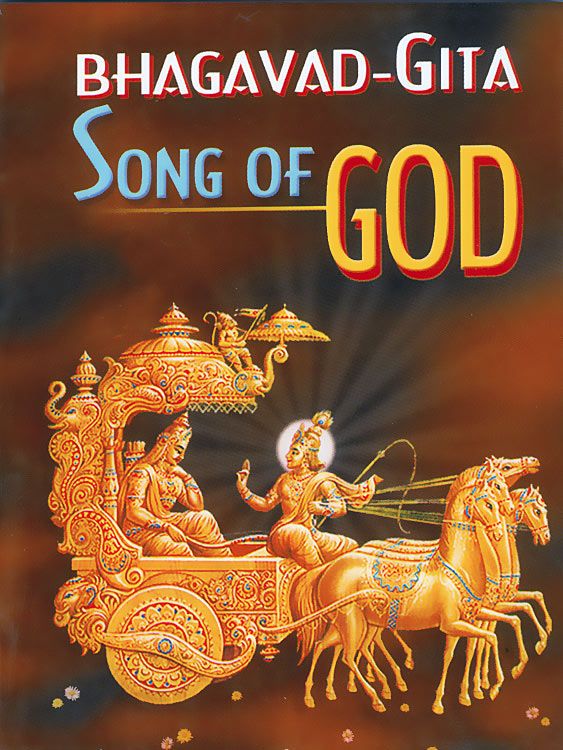In the quiet chambers of ancient wisdom, where the murmurs of creation first resonated, lies the Aitareya Upanishad – a profound journey into the very essence of being. This sacred text, nestled within the Rig Veda, invites us to explore the cosmic origins of existence and our intimate connection to the universe. It’s a timeless narrative, speaking to the heart of humanity across cultures, revealing that the ultimate truth isn’t external, but woven into the fabric of our deepest consciousness.
Let us begin with a prayer, a universal longing for harmony:
Om! May my words flow from a place of truth, aligned with the clarity of my mind.
May my mind be rooted in the integrity of my speech.
O radiant Source of all light, reveal Your truth within me.
May both my thoughts and my words become vessels for this sacred knowledge.
May the wisdom I receive never fade from my memory.
May my pursuit of truth bridge the gaps between waking and sleeping, uniting all moments in conscious understanding.
I vow to speak that which is verbally true, and to align my innermost being with what is truly right.
May that ultimate Reality protect me on this journey; may it protect the guiding voice of the teacher.
May it shield me, may it shield the teacher.
Om! Peace. Peace. Peace.
The Cosmic Dance of Creation: From Oneness to Manifestation
Imagine a time before time, a space before space. The Upanishad opens with a breathtaking vision: In the beginning, there was only the absolute Self – boundless, singular, utterly still. Nothing else stirred, nothing winked, nothing existed separate from this primordial unity. It was the unmanifested potential, the pure consciousness from which all things would eventually spring.
Then, from this profound stillness, arose a thought, not a human thought, but a cosmic impulse: “Let Me create the worlds.”
And so, worlds unfolded, not just physical realms, but vast dimensions of experience. The Upanishad names them: Ambhas, the ethereal realm beyond the heavens, supported by the cosmic vastness; Marici, the luminous sky; Mara, the solid earth we inhabit; and Apah, the mysterious depths below. These are not merely geographical locations but represent different planes of existence, different states of being, all born from that singular, conscious intent.
With the worlds laid out, the Cosmic Self reflected: “These are the worlds. Now, let Me create the protectors for these worlds, beings to inhabit and sustain them.” From the cosmic waters – the primal fluid of creation – He gathered a form, a blueprint of potential life, shaping it into what we might call the universal human form, or Virat Purusha.
As He contemplated this nascent form, like an egg splitting open, its mouth parted. From this opening emerged speech, and from speech, the principle of Fire (Agni), the warmth and light of expression. Then, the nostrils opened, giving rise to the sense of smell, and from smell, the principle of Air (Vayu), the breath of life. The eyes opened, and with them, the sense of sight, and from sight, the illuminating Sun. Ears opened, bringing forth the sense of hearing, and from hearing, the vastness of the Directions. The skin emerged, bearing the sense of touch, and from touch, the nurturing Herbs and Trees. The heart took shape, giving rise to the mind, and from the mind, the reflective Moon. The navel opened, from which came the faculty of ejection, and from it, Death – the principle of dissolution and transformation. Finally, the seat of creation opened, bringing forth the procreative organ, and from it, the Waters of new life.
This intricate tapestry reveals a profound truth: our physical senses and mental faculties are not isolated biological functions, but direct manifestations of universal cosmic principles. We are microcosms, perfectly reflecting the macrocosm, endowed with instruments to perceive and interact with the grand design.
The Vessel and the Vital Drives: Finding Our Place in the Cosmos
These cosmic forces, these “deities” or principles that had just been created, found themselves adrift, like entities falling into a vast ocean of existence. The Cosmic Self then imbued the universal form with the primal urges of hunger and thirst. Overwhelmed by these fundamental needs, the newly formed faculties cried out to their Creator: “Provide an abode for us! A dwelling where we can find nourishment and truly exist.”
The Creator first presented them with a cow, a symbol of abundance and sustenance. But they said, “This is not quite right for us.” Then, He brought a horse, embodying strength and swiftness. Again, they found it wanting: “This is not adequate for us.”
Finally, He presented them with a human form. And a chorus of recognition arose: “Ah, this one is perfectly formed! Indeed, humanity is a divine creation, beautifully crafted!” To these eager faculties, the Creator then declared, “Enter into your respective abodes within this form.”
And so they did. Fire, as the organ of speech, entered the mouth, igniting communication. Air, as the sense of smell, settled in the nostrils, breathing in the world. The Sun, as the sense of sight, took its place in the eyes, illuminating perception. The Directions, as the sense of hearing, entered the ears, attuning to the echoes of existence. Herbs and Trees, as the sense of touch, spread across the skin, connecting with the tangible world. The Moon, as the mind, found its home in the heart, giving rise to thought and emotion. Death, as Apana (the downward vital energy), settled in the navel, governing elimination. And Water, as semen, entered the generative limb, enabling procreation.
Yet, Hunger and Thirst, these ceaseless, primal forces, remained. They approached the Creator: “And what about us? Where is our abode?”
The Creator, in His infinite wisdom, replied: “I grant you your sustenance among these very cosmic principles, among all beings. You shall share in their portions.” This explains why, whenever any offering is made, whenever any being is nourished, Hunger and Thirst are inherently satisfied along with it. They are the underlying drivers, the ceaseless motors that propel all life, forever seeking completion.
The Search for True Sustenance: The Inner Spark of Life
Now, with the body formed and the senses in place, the Cosmic Self reflected: “These are the senses and their presiding principles. But what about their nourishment? Let Me create food for them.”
He pondered upon the waters once more, and from this contemplation, a form emerged – the very essence of food, sustenance itself. But as soon as it was created, this “food” turned and attempted to flee, like a wild deer.
The Cosmic Self tried to grasp it with speech. It failed. (Imagine, if we could be nourished simply by talking about food, how easily satisfied we would be!)
He tried to grasp it with the sense of smell. It failed. (If merely smelling food could fill us, we’d live in perpetual contentment.)
He tried with the eye, with the ear, with the sense of touch, with the mind, even with the procreative organ. Each attempt failed. None of these outer instruments, by themselves, could truly apprehend or assimilate food. This highlights a profound spiritual insight: true sustenance, true fulfillment, cannot be achieved through mere sensory gratification or intellectualizing.
Finally, He tried to grasp the food with Apana – the vital life-force that governs intake, digestion, and assimilation. And with Apana, He caught it! This Apana, the downward-moving vital energy, is indeed the devourer, the true assimilator of food. It is the life energy that fundamentally depends on and processes nourishment for existence.
Then came a pivotal moment of self-reflection for the Cosmic Self: “How can this intricate system, this entire creation, truly exist without Me? Through which door shall I enter and truly animate it?” He considered all the functions: “If speech utters, smell smells, sight sees, hearing hears, touch feels, mind thinks, Apana processes, and the procreative organ creates – then what am I? What is my unique role?”
This question is deeply profound. It’s the inquiry into the animating principle, the “I” behind all the “doings.” It’s the quest for the pure consciousness that observes and enables all faculties.
Having contemplated, He split open the crown of the head – the very top of the skull – and through this supreme aperture, He entered. This entrance is known as vidriti, “the chief entrance,” and because it is the gateway for the animating Self, it is said to be supremely delightful.
Upon entering, the Self became the living essence within. This indwelling Self experiences three abodes or states within the human body – three “dreams” as it were: the waking state, the dreaming state, and the state of deep, dreamless sleep. These are our fundamental modes of conscious experience.
Born into this form, the Self manifested itself through all beings. And in that manifestation, did it truly know anything else but itself? It realized this very Purusha (the indwelling spirit) as Brahman (the ultimate, all-pervading Reality), declaring, “I have realized this!”
And so, the Upanishad states, His name became Idandra – “He who saw this.” Though His true name is Idandra, people often refer to Him indirectly as Indra (the king of gods), for the gods, it is said, are fond of indirect names, veiling the deepest truths in metaphor. This implies that the true “king” or “ruler” of all is not an external deity, but the very consciousness that realizes itself within.
The Three Births of Man and the Journey to Immortality
The Upanishad then shifts its focus to the human journey, illustrating the profound path of the Self through cycles of life and liberation.
First, the soul is conceived within man. The very essence, the vital energy of all his limbs, becomes the semen. He holds this essence within himself, and when he unites with his wife, he plants this seed of himself. This, the Upanishad declares, is his first birth – the birth of new life, the continuation of the lineage.
The child, within the mother, becomes inseparable from her, like her own limb. She nourishes this new life, this extension of herself. She, the nourisher, in turn, becomes worthy of nourishment and protection. She carries the embryo, and the father, from the very moment of birth, protects his son. By protecting his son, he ensures the continuity of these worlds, the unbroken chain of existence. This preservation of the family line, this commitment to the future generation, is his second birth – a birth into expanded responsibility and enduring legacy.
Finally, this son, the father’s very self, takes on the mantle of duty and virtuous deeds. When the father, having fulfilled his life’s purpose and grown old, departs from this world, he is, in a sense, reborn. This is his third birth – a transition from the physical realm, a culmination of his earthly journey, and, for the wise, an ascension into higher states of consciousness.
This profound truth was articulated by the ancient seer Vamadeva. Even while cradled in his mother’s womb, he declared: “Even while I lay in the womb, I came to know the birth of all the cosmic principles, all the divine forces. A hundred iron fortresses held me captive (symbolizing the limitations of the physical body and ignorance). But then, like a soaring hawk, I broke free, piercing through those barriers by the sheer power of Self-knowledge.”
Vamadeva’s declaration is a beacon of hope for all: it signifies that true liberation, the realization of the Self, is not bound by physical birth or death, not confined by the limitations of circumstance. It is an inherent potential within us, accessible through profound understanding.
He who awakens to this truth, who realizes his identity with the Supreme Self, attains all desirable things even in this very life. And when the body, his temporary vessel, eventually perishes, he ascends higher, not merely to a heavenly realm, but he becomes immortal in the world of the Self. He becomes immortal. This is not an endless physical life, but a transcendence of the cycle of birth and death, a union with the eternal.
Consciousness Is Brahman: The Ultimate Reality
The Upanishad culminates in its most profound and liberating declaration, addressing the fundamental question that has echoed through human history: “What is it that we truly worship as this Self? Which among our faculties is the Self?” Is it the faculty of sight, or hearing, or smell, or speech, or taste?
The answer is clear and unifying: It is this very core of intellect and mind that was spoken of earlier – not the instruments themselves, but the animating essence behind them.
It is sentience, the ability to feel and perceive. It is rulership, the power of discernment and control. It is secular knowledge, the grasp of the world. It is presence of mind, the ability to be alert. It is retentiveness, the capacity to remember. It is sense-perception, the faculty of experience. It is fortitude, the strength to endure. It is thinking, the act of cognition. It is genius, the spark of insight. It is mental suffering, the capacity for emotion. It is memory, ascertainment, resolution, the vital life-activities, hankering, passion – and countless others. All these, the Upanishad declares, are truly but names, manifestations, and expressions of one singular, underlying Consciousness.
This Consciousness is not just a part of us; it is the whole. This One is (the inferior) Brahman (the universal essence in its manifest form); this is Indra (the perceiving consciousness); this is Prajapati (the lord of creation); this is all the gods; and this is all these five elements – earth, air, space, water, fire. It is all creatures, great and small, those born from eggs, from wombs, from moisture, from the earth – horses, cattle, humans, elephants, every moving and flying creature, and those that are still.
All these, without exception, have Consciousness as the giver of their reality; all these are impelled and sustained by Consciousness; the universe has Consciousness as its very eye, its source of perception, and Consciousness is its ultimate end, its goal.
Consciousness is Brahman. (Prajnanam Brahma – one of the great Mahavakyas, or Great Sayings of the Upanishads).
Through this Self, this Consciousness, the awakened one transcends the limitations of this world. And having fulfilled all desires – not through endless seeking, but through the realization of inherent completeness – in that heavenly world of the Self, he becomes immortal. He becomes immortal.
Om! May my words flow from a place of truth, aligned with the clarity of my mind.
May my mind be rooted in the integrity of my speech.
O radiant Source of all light, reveal Your truth within me.
May both my thoughts and my words become vessels for this sacred knowledge.
May the wisdom I receive never fade from my memory.
May my pursuit of truth bridge the gaps between waking and sleeping, uniting all moments in conscious understanding.
I vow to speak that which is verbally true, and to align my innermost being with what is truly right.
May that ultimate Reality protect me on this journey; may it protect the guiding voice of the teacher.
May it shield me, may it shield the teacher.
Om! Peace. Peace. Peace.
Reflections on the Aitareya Upanishad:
The Aitareya Upanishad takes us on an extraordinary journey, from the boundless silence of the Absolute Self to the intricate dance of creation, culminating in the profound revelation of our own divine nature. It’s a narrative that dismantles our usual perceptions, inviting us to see beyond the superficial distinctions of forms and functions.
The story of creation isn’t a historical account but a spiritual metaphor, illustrating how the one, indivisible Consciousness projects itself into the multiplicity of the universe. Our senses, our minds, our very drives – even hunger and thirst – are not external impositions but expressions of this single Reality.
The failure of the senses to grasp “food” (sustenance) highlights a universal human struggle: the endless pursuit of satisfaction through external means. It gently guides us to the profound truth that true fulfillment comes not from external acquisition, but from the indwelling Apana, the life force that assimilates experience, and ultimately, from the Conscious Self that animates all.
The Self’s query, “How can it be there without Me?” is the cosmic echo of our own existential search for purpose. Its entry through the “chief entrance” signifies the intimate indwelling of the divine within each of us, making every human being a temple of consciousness.
Finally, the declaration “Consciousness is Brahman” is the jewel of this Upanishad. It shatters the illusion of separation, revealing that the “I” within each of us – that simple, undeniable awareness – is not merely a product of the brain, but the very essence of the universe, boundless and eternal. Our thoughts, feelings, perceptions, and even our very physical existence, are but ripples on the vast ocean of this one Consciousness.
This ancient wisdom offers a universal pathway to peace and liberation. It tells us that our purpose is not to become something we are not, but to realize what we already are: an inseparable part of the Universal Consciousness. This realization is the ultimate birth, the true immortality, a state of profound peace that transcends all limitations, accessible to all, regardless of culture or creed. It’s a call to look within, to understand the true nature of the “I,” and in doing so, to recognize the divine in all.
